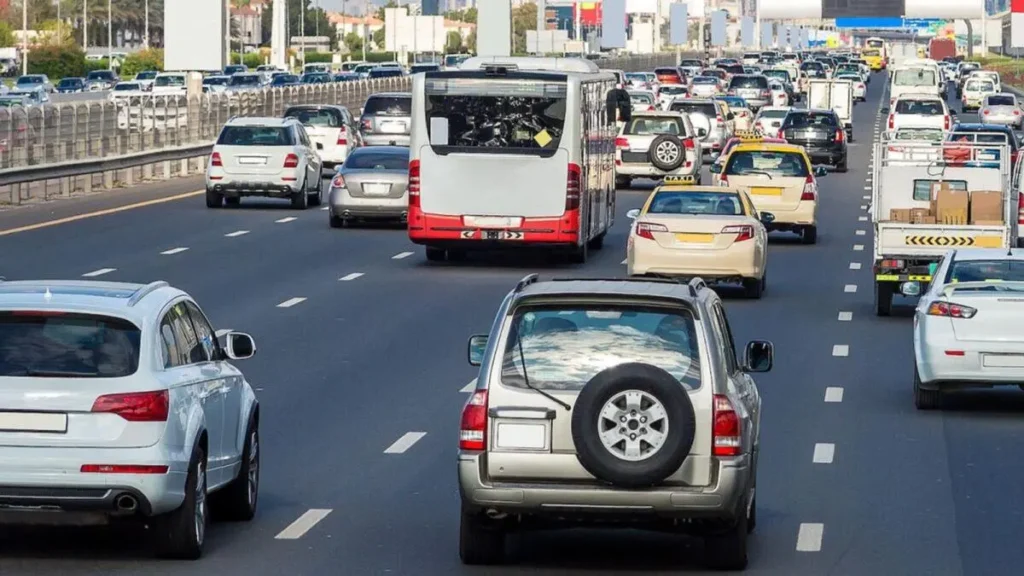This is still a concern as Dubai progresses towards becoming an international city with fast-approaching urban dilemma of traffic congestion. Many urban planners think that increasing the number of toll roads and implementing charges for accessing congestion-prone areas coupled with enhancing the public transport might help in dealing with the traffic situation in the emirate. Chambers of urban planning and architecture have painted the picture on how these strategies may transform the way people live and interact with the city.

Table of Contents
1. Expanding Toll Gates to More Roads
Currently, Dubai operates a linear toll system, with multiple toll gates along the same roads, such as Sheikh Zayed Road. Dr. Khaled Alawadi, Associate Professor of Sustainable Urbanism at Khalifa University, suggests a different approach: moving to wider networks of roads it was possible to systematically institute toll gates in a circular pattern.
“We have four of them in Dubai now and with the new toll gates soon to be constructed, Sheikh Zayed Road will have four.” Dr. Khaled said. “It is much more reasonable to have different toll gates scattered at different roads, hence the distribution of the traffic load would be more or less even.” This would reduce pressure on the major highways and ease the traffic jam in all parts of the city.
2. Taxing Entry into Busy Areas
When it comes to crowded places, there are lots of places, mostly in Dubai Marina and Jumeirah Beach Residence (JBR). Dr. Khaled also suggests that he would want to institute tolls on anyone who wants to access these densely populated districts while keeping the residents of those districts unrestricted.
“One could perhaps limit the number of cars accessing these areas by charging the visitors a toll fees,” he said. In this way adopting such a system will help in reducing traffic in those areas that are crowded with tourists, thereby providing a better experience for people living in those areas, as well as those tourists who prefer to travel via public transport.
3. The Limits of Toll Systems in Solving Congestion
Shweta Gandhi, an associate consultant of Urban Planning and Strategy at Kearney, said that toll gates might redistribute traffic, but do not necessarily correct the problems of congestion.
“Tolls alone do not improve traffic,” she said. “They might shift traffic to other roads, but that usually causes traffic jam in those parts as well.” Therefore, in order to be effective tolls have to form a part of a coherent strategic plan that involves public transport as well as other forms of transportation.
In fact, the drivers who would prefer not to incur the Dh4 toll will end up using more petrol in the long journey and also contributing to traffic congestion on secondary roads.
4. Enhancing Public Transport and Mobility Options
If tolls are to successfully discourage congestion, the city’s public transportation must provide cheaper and more appealing options. Shweta cites the example of Milton Keynes Mobility as a Service initiative currently active in the United Kingdom where people can use a single smartphone application to travel in traditional public transport, bike share or through a taxi hailing service.
“Various forms of transport, and the ability to travel from one mode to another within an app while paying fluctuating prices depending on choice is the next frontier,” she noted. “This transitions from charging the vehicles to offering attractive options that may solve congestion issues.”
In Dubai, one may extend the metro to some residential neighbourhoods such as Jumeirah Village Circle (JVC) and other crowded districts to enable more individuals to switch from using their vehicles to use public transport.
According to Dr. Khaled, “the public transport system should blend into where people dwell and commute to work.” Instead, he said communities that are not yet linked to the metro like JVC could benefit from such a system. Transportation network compatibility with the land use will also be important for the future growth of the city.
5. Dynamic Pricing: Feasible or Not?
Another possible solution might constitute dynamic tolls, where the price of access depends on current traffic conditions, although this solution has its shortcomings in Dubai. Real-time adjustable tolls help with this, but the dynamics are not a suitable solution in Dubai for several reasons.
Shweta also said that while dynamic pricing can indeed have its place in cities that operate efficient public transport systems, in the case of Dubai, for example, it would only become something that adds more of a financial burden to residents than anything. Higher tolls may not necessarily deter people simply because they may provide an excuse to shift in other means of transport instead of using the road that has been tolled. Anyone would just have to pay more when traveling during rush hour as she mentioned,” they said.
Dr. Khaled further noted that the peak-hour toll pricing system; which is present in Abu Dhabi is not in Dubai. For instance, he argued that it is impossible to provide dynamic pricing for traffic intensity because ‘Dubai is always active at any time in a day, even at midnight’.
6. Infrastructure for Soft Mobility
In reference to the proposition of a current-thinking involvement, which includes addressing the congestion problem, one innovation is the concept of soft mobility infrastructure, including quality bicycle lanes, pedestrianized streets, and integration of public transportation.
Shweta emphasized the importance of creating a citywide transport strategy that integrates these elements, avoiding bottlenecks caused by isolated planning. “Without alignment between different transport initiatives, we’ll just be shifting congestion around, rather than solving it,” she concluded.
Also Read: World Tennis League Announced an Impressive Roster of Athletes for Season 3
Final Thoughts
The best approach towards addressing traffic jam problem in Dubai will involve several approaches. Even if toll gates are expanded or entrance to congested areas is taxed, those actions must go hand in hand with efficient transport, land-use coordination, and pleasant soft modes of transport. Only then can one dream of Dubai to remove the traffic problem and provide better, more efficient and, therefore, sustainable means of transport for its inhabitants and tourists.

